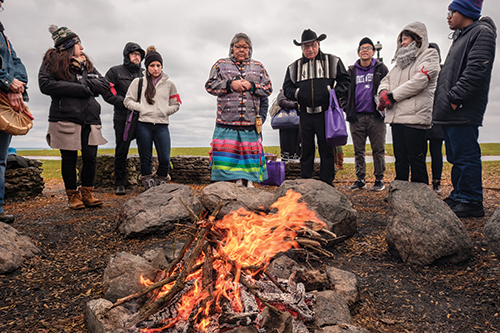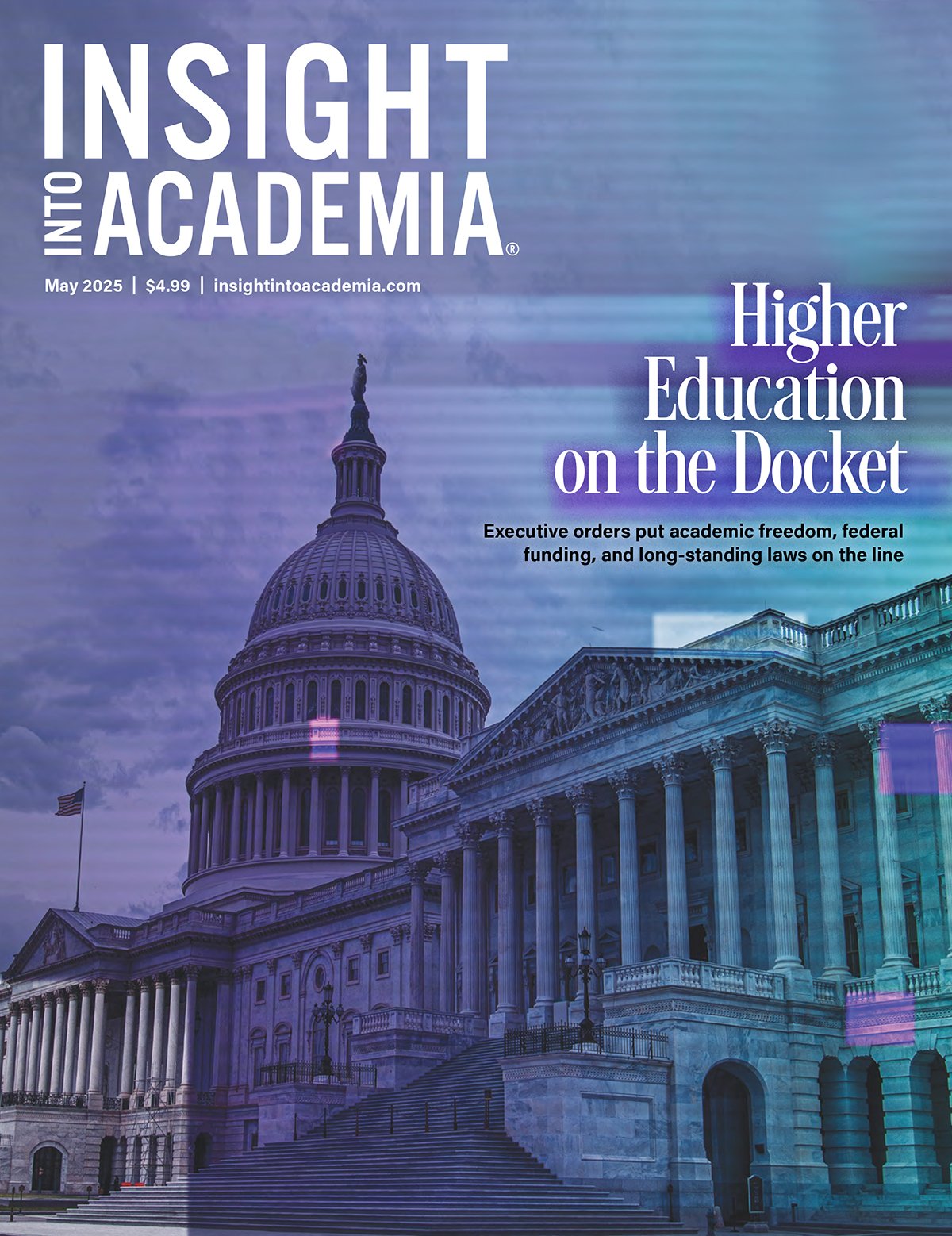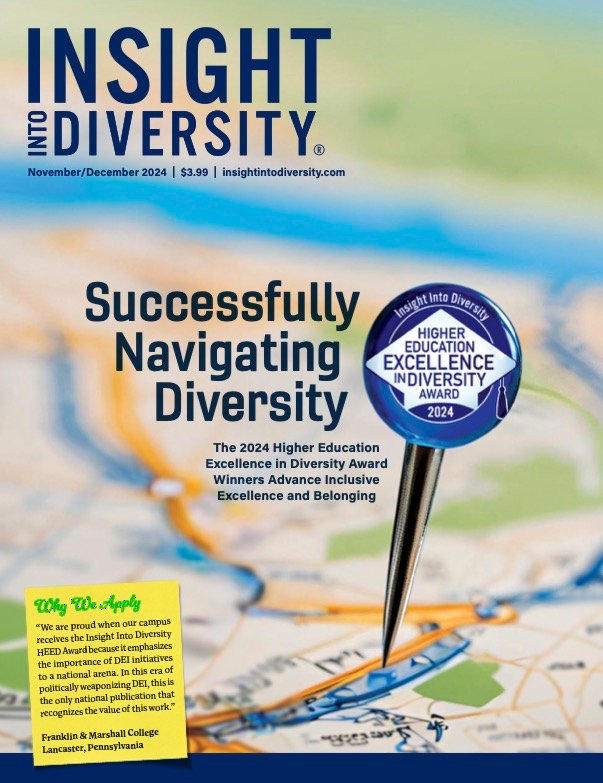Like many American organizations, colleges and universities in the U.S. often occupy land that was once home to Native American communities. While modern Americans typically take for granted the fact that they reside on territory stolen from indigenous people, there is a growing trend in higher education to remember and honor the tribes and people to whom this land originally belonged through official land acknowledgement statements.
A land acknowledgement is a “formal statement that recognizes and respects Indigenous Peoples as traditional stewards of this land and the enduring relationship that exists between Indigenous Peoples and their traditional territories,” according to the American College Personnel Association, which hosted an educational conference on the issue in March 2019.
Land acknowledgement is a common practice in places like Australia, New Zealand, and Canada, where these statements are often read before sporting events or take the form of “signage in lobbies or written statement[s] in organizational brochures or event programs,” according to the 2019 report “Land Acknowledgement: A Trend in Higher Education and Nonprofit Organizations” by Thomas Keefe, an assistant professor at Rocky Mountain College of Art & Design. Nearly every Canadian university has issued a land acknowledgment statement, according to the article. And while the practice has been more widely adopted by the arts community in the U.S., higher education is catching up, Keefe states.
[Sand Creek descendants and community members gather around a fire pit at Northwestern University’s annual Sand Creek Massacre Commemoration event in 2018. The 1864 Sand Creek Massacre in Colorado included the murder of more than 150 Cheyenne and Arapaho Native Americans.]
Miami University
“Land acknowledgements are one step in helping people recognize where the land came from, how it has evolved, who made contributions, who has benefited, and how that has been part of the fabric of this institution,” says Ron Scott, PhD, vice president for diversity and inclusion at Miami University (MU) in Ohio. “An educational institution that’s not concerned or interested in sharing or promoting that information is missing a chance to help improve the [campus] culture.”
 Since the early 1970s, MU has worked to establish a lasting relationship with the Miami Tribe of Oklahoma (originally known as the Myaamia), whose large homelands include the space where campus now sits. The school’s Myaamia Center, which was created as a result of their collaboration and partnership, serves as a research hub to help revitalize the tribe’s language and culture, and MU students visit the tribe annually to learn about its history. It was through working with the Myaamia that MU realized their “Redskin” mascot was culturally insensitive and thus changed its name to the MU RedHawks.
Since the early 1970s, MU has worked to establish a lasting relationship with the Miami Tribe of Oklahoma (originally known as the Myaamia), whose large homelands include the space where campus now sits. The school’s Myaamia Center, which was created as a result of their collaboration and partnership, serves as a research hub to help revitalize the tribe’s language and culture, and MU students visit the tribe annually to learn about its history. It was through working with the Myaamia that MU realized their “Redskin” mascot was culturally insensitive and thus changed its name to the MU RedHawks.
“There is this term in the Myaamia language called, ‘Neepwaantiinki.’ It means ‘learning from each other,’” says Scott. “[The Myaamia] have helped us grow and have a better appreciation for the history, legacy, and contributions that the tribe has made to not only just this region, but to the nation.”
 In 2019, MU realized that their efforts to honor the Myaamia were incomplete without a formal statement recognizing that the university occupies their homeland.
In 2019, MU realized that their efforts to honor the Myaamia were incomplete without a formal statement recognizing that the university occupies their homeland.
A faculty member drew attention to the issue during a meeting with the Board of Trustees, according to Scott. The board officially enacted a land acknowledgement statement in December; it is available online at miamioh.edu/diversity-inclusion/land.
When asked why it took so long for MU and other institutions to begin adopting land acknowledgment statements, Scott says that because of historic traditions of Native American erasure, institutions have learned to exclude mention of these tribes from their formal histories.
“We have not told the full story, and it’s time that we’ve understood it,” he says.
Northwestern University
Northwestern University (NU) adopted a land acknowledgement statement after the university conducted an investigation into one of its founders, John Evans, and his role in the 1864 Sand Creek Massacre in Colorado, which resulted in more than 150 Cheyenne and Arapaho deaths. NU formed a task force and later a steering committee to improve Native American inclusion and acknowledge Evans’ actions and the university’s place in indigenous history.
 Individual departments began adopting land acknowledgements and, in 2018, NU created an official statement that was read at commencement, printed in programs and brochures, and published online.
Individual departments began adopting land acknowledgements and, in 2018, NU created an official statement that was read at commencement, printed in programs and brochures, and published online.
“Land acknowledgements serve to disrupt invisibility and ongoing erasure of Native Americans,” says Jasmine Gurneau, manager of NU’s Native American & Indigenous Initiatives and a member of the Oneida/Menominee nation. “So, if there are other gestures universities can do to discontinue that erasure, then there are other ways to show [acknowledgement].”
Gurneau gives examples such as having more Native American representation throughout campus — including more indigenous faculty, staff, students, and structural and visual representation. Northwestern has established a minor in indigenous studies, an indigenous tour of campus, and the Center for Native American and Indigenous Research, among other efforts.
NU’s land acknowledgement statement is available online and includes a downloadable flyer that users are encouraged to post “in your work space to help spread awareness and reflection on Northwestern’s place in relation to the land it’s situated on,” according to the school’s website. The artist who designed the flyer is a member of the Ojibwe tribe, one of the three indigenous groups whose homeland is now occupied by the university.
Gurneau recognizes this history in her email signature, which states “In the spirit of healing, I acknowledge and honor the Potawatomi, Odawa, and Ojibwe Tribes, the original people of the land upon which Northwestern University stands.”
 Many individuals contact Gurneau to inquire about developing land acknowledgments for their own institutions, she says. “I feel like there has been more movement, engagement, and visibility happening around Native American and indigenous initiatives,” she says.
Many individuals contact Gurneau to inquire about developing land acknowledgments for their own institutions, she says. “I feel like there has been more movement, engagement, and visibility happening around Native American and indigenous initiatives,” she says.
During a 2016 panel discussion on land acknowledgements at University of British Columbia, Professor Daniel Justice, a member of the Cherokee nation, said that despite the difficulties involved in recognizing an institution’s role in the erasure of Native American tribes, acknowledging this history is a necessary political statement.
“Acknowledgements should be challenging,” Justice stated, adding that silence on these issues is more dangerous than facing uncomfortable truths about an institution’s past. “We’re not only talking about a history of the past, we’re talking about (having) an ongoing relationship.”
For more information, visit landacknowledgements.org.
Mariah Stewart is a senior staff writer for INSIGHT Into Diversity. This article ran in the January/February 2020 issue.




















